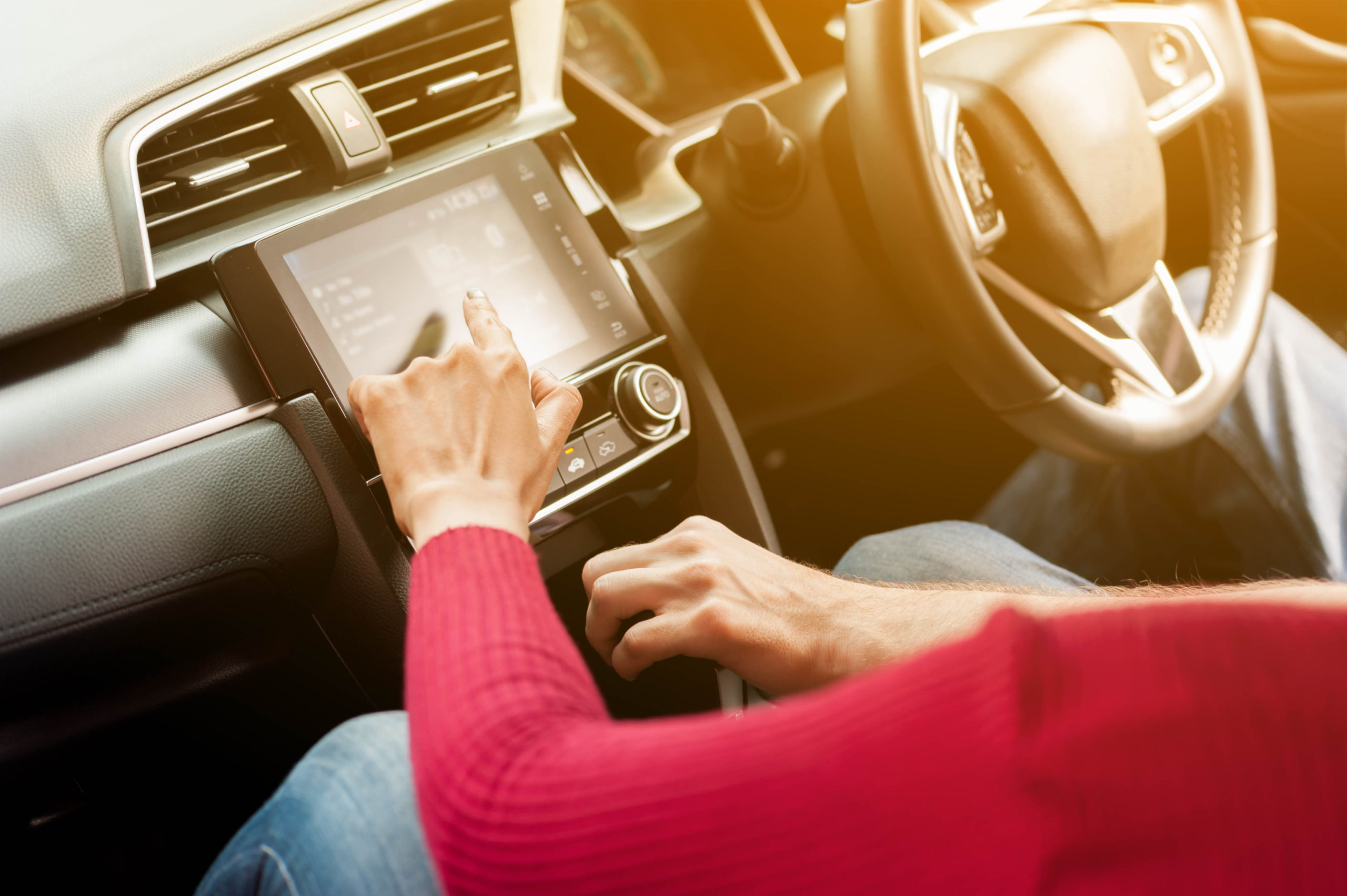
There has been a widely-reported growth of new technology and interest in the automotive sector in recent years. We now expect our vehicles to do more than ever before and this trend is forecast to continue. The challenge for manufacturers is how to integrate this new technology and meanwhile provide the sleek and minimalistic interior that consumers expect. Haptics may be able to answer this call. Indeed, according to Immersion Corporation, the automotive sector will be one of the growth areas for haptics.
Haptic technology communicates information to and from a user through touch. A common example already used in many vehicles is the sensory feedback provided through the steering wheel or driver’s seat for lane positioning systems. Tesla received coverage earlier this year for a new patent application they filed towards a steering wheel that enables the driver to input different gestures onto pads to activate certain functions on the car. At CES 2020, there were reportedly exhibits of cars having their whole interior equipped with haptic surfaces. Such devices can achieve the all-important task of communicating data to and from a driver without the driver having to avert their gaze from the road. Better still for car manufacturers, they can provide the sort of new and exciting technology that drives consumer interest and customer orders.

Drawing from ‘User Interface for Steering Wheel’ WO 2020/028625 A1 (Tesla Inc)
In newly emerging technology areas, such as haptics, there is typically a rush towards filing patent applications – which enable innovators to control who uses their technology and so distinguish their products over those of their competitors. However, if patents are used for “excluding others” do they serve the interest of the automotive sector as a whole? It can be assumed that consumers will not want to learn a series of different gestures that are bespoke to a particular manufacturer’s vehicle or be presented with a wide variety of different modes of communication in the marketplace. Consumers need to be able to change between vehicles with relative ease and sit one driving test that is appropriate for all vehicles in that class.
At first glance, patents might therefore appear contrary to the goals of promoting the widespread adoption of new technologies within the automotive sector. However, there remains a need for innovators to secure a return on their investment – something that cannot be guaranteed by making innovations freely available. With the rush of patent applications being filed in the field, there are potentially different models being used by the different players to exploit their innovation and development and to hasten adoption of the technology into the industry, while still returning value. Examples include open innovation, standardisation, patent pooling and B2B licensing.
Perhaps counterintuitively, patents can be a key enabler of promoting the uptake and standardisation of new technologies.
Open Innovation combines patenting with open source licensing. Whilst patents allow the owner to control how others use their invention, open source licences allow anyone to use the product without the need to request permission from the owner. Open innovation harmonizes the benefits of both systems in which patent owners exercise their right to make patents freely available to others in order to promote further innovation. This particular model has been adopted by Tesla who have made a select list of their patents open for anyone to use with the aim of encouraging competition and innovation between electric vehicle manufacturers, rather than stifling development. If new technology, for example haptics in automobiles, is to succeed quickly and become a standard feature, the ideas underpinning the technology must be accessible so that others can build on it and accelerate the advancement of haptics technology. By patenting the technology, the patent owner retains the ability to bring litigation against users that do not follow the terms of the open innovation agreement or to assert their rights against infringers.
B2B licensing can offer an attractive licensing model to patent owners because the business gets to keep ownership of their own intellectual property but benefit from the use of other’s intellectual property through cross-licence agreements. This avoids potential freedom-to-operate issues or infringement issues as the businesses agree between them that they can each exploit technology that may be relevant to their business. Each business can therefore get their innovation to market quicker and thus generate revenue quicker. Since haptic technology will go hand-in-hand with related automotive technology areas such as entertainment and navigation, it would be beneficial for these technology companies to allow access to each other’s ideas and work together, rather than providing barriers to development.
Businesses which have agreed to cross-license patents to each other often set up patent pools relating to a particular technology, for example haptics, in order to save both patentees and licensees time and money. Advantageously, automotive companies that are part of a patent pool can be offered an aggregated set of patents for a single price, and they are then free to implement as much or a little of the technology within these patents as they need. This avoids the need for careful consideration of each patent to determine either if it is relevant and a licence is needed or if it could conflict with current developments and needs to be avoided or circumvented. Patent pools hence present a practical one-stop shop for implementers of the newly emerging haptic technology and they provide more transparency and predictability surrounding the new technology. Having patents within a patent pool can be one way that a company can look to get a return on their investment when they need their ideas to be incorporated by all other companies.
The most successful patent pools are often tied to a standard in order to verify the technology within the pool as having passed scrutiny and deemed valuable to the industry in question. Many standards (i.e. accepted rules or requirements relating to a specific technology) are already implemented by the automotive industry for connectivity, entertainment (e.g. cloud/internet access), and navigation (e.g. real-time traffic updates, augmented reality) including WAVE (Wireless Access in Vehicular Environment), DSRC (Dedicated Short-Range Communications) and HaLow (Wireless technology). A patent which includes technology that becomes part of these standards is a standard essential patent (SEP).
SEPs are commonly found in industries where technical interoperability is vital for commercial success. This is particularly relevant to haptic technology where the feedback given to a user, in response to a particular action, should be consistent across all automobiles so that users do not have to learn new feedback patterns and signals each time they change vehicles. This is made possible through compliance with the standard. Owning a patent to a standard can be highly commercially valuable as it guarantees that the technology within the patent will be used in commercial products, opening up a steady revenue stream.
We anticipate there will be a sustained growth in patent filings for haptic technology in the automotive sector. Whilst on the face of it there may appear to be a paradox between patent law, which aims to create legal monopolies over technology, and the need for all competitors to comply with potential haptics standards that emerge and implement the related SEPs to enter the market, patents benefit both the company and the consumer. Patents can be used to generate revenue, whether used to distinguish your technology over that of your competitors or generate licensing revenue. Given this flexibility, innovators must build a patent portfolio that is designed with their business in mind and tailored towards their commercial goals. Our team of patent experts can help you achieve this goal and ensure that your patents are working for you, so get in touch with us to discover how we can maximise your commercial success.
